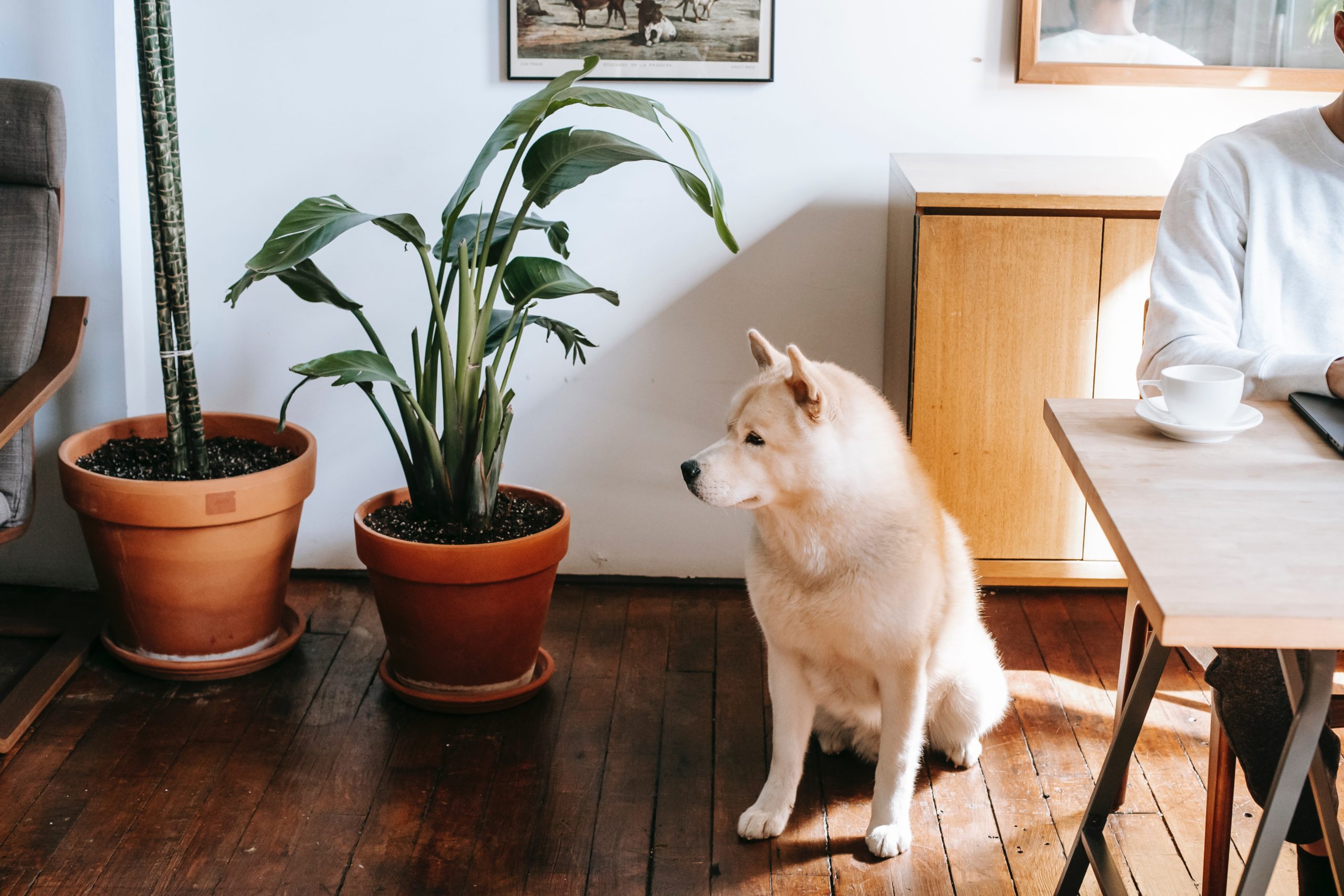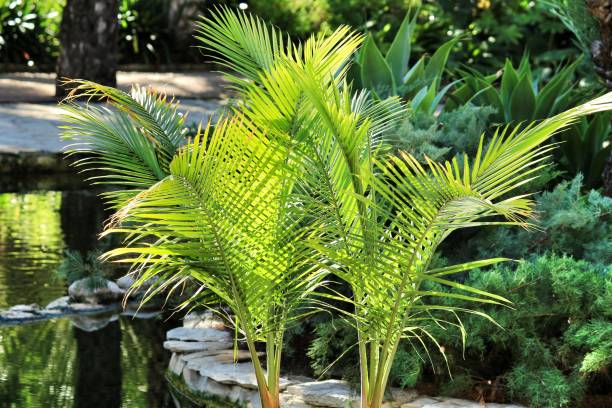Plants Toxic to Dogs You Should Avoid Having in Your Home

House plants are best to brighten up space and add a positive vibe to your home. Nevertheless, if you have a dog at home, then there are some houseplants you should avoid having at your home. Yes, you read it right. Some plants can be toxic to your pooch. Here is an article with the list of plants toxic to dogs.
Plants Toxic to Dogs
There is a wide range of benefits of having popular houseplants in your space. They not only add a decorative touch to your home but also purify the air and add a positive vibe (Source). However, some plants are not good enough if you have a pet dog in your home.
What plants are toxic to dogs? Some houseplants are mildly poisonous, but some are also fatal. Therefore it is better to know about the house plants toxic to dogs.
Aloe Vera
Toxins – Saponins
Symptoms – Vomiting, diarrhea, depression
What plants are toxic to dogs? When it comes to the list of poisonous plants for dogs, we can not deny aloe vera. It is a beneficial plant due to associated medicinal uses. Therefore people often focus on how to take care of an aloe vera plant. However, this plant is not good for your dog.
It can be quite toxic for your pooch if ingested. Aloe is a low-maintenance plant and is a species of succulent. It is easy to propagate aloe vera, which makes it a common houseplant. If you want to have this plant, then make sure to stay cautious and keep it away from your dog.
Fiddle Leaf Fig
Toxins Substances – Insoluble calcium oxalates
Symptoms – Gastrointestinal irritation and skin irritation
Fiddle leaf fig is one of the poisonous plants toxic to dogs and cats if ingested. This plant is highly appreciated by house plant enthusiasts and interior decorators. It is a medium to large-sized plant featuring large fiddle-shaped leaves and a thin trunk.
Consuming this plant can cause painful symptoms like gastrointestinal and skin irritation. Moreover, it can also cause oral irritation, vomiting, and even drooling. In case your dog eats this plant get them to the veterinarian as soon as possible. If your dog loves chewing plants, make sure not to have this one in your home.
Philodendron
Toxins – Insoluble calcium oxalates
Symptoms – Intense burning, irritation of tongue, mouth, vomiting
Philodendron is one of the low-maintenance houseplants. This one belongs to the genus of tropical plants and is loved by indoor gardeners for its stunning foliage. Some of the popular varieties of Philodendron include philodendron Micans and philodendron Brasil.
The varieties of this plant are harmless to touch, but if ingested by dogs or cats, they can be really toxic to them. It can cause trouble breathing, intense burning, and vomiting to your dog, which makes it one of the plants toxic to dogs.
Zamioculcas Zamiifolia (ZZ) Plant
Toxins – Insoluble calcium oxalates
Symptoms – Irritation, difficulty breathing, and excessive drooling
This plant can easily survive in extreme darkness, which has made it a popular houseplant. These plants grow from rhizomes due to which they do not require frequent watering, which makes them a low-maintenance house plant.
Sadly, this is among the poisonous plants for dogs if ingested. It can cause oral burning, vomiting, difficulty breathing, swelling, and irritation to your dog. Therefore, it is better to avoid this plant in your home. In case you have it, stay extra cautious and keep your pooch away from it.
Dumb Cane
Toxins – Insoluble calcium oxalates
Symptoms – Difficulty breathing, swelling, and vomiting
Dieffenbachia, commonly called dumb cane, is a beautiful tropical plant. It comes in different sizes ranging from a foot tall to around four to five feet tall. The most popular variety of Dieffenbachia is D, amoena, and Camilla.
This is not only a poisonous plant for dogs but also cats. Some of the symptoms include difficulty breathing, drooling, and vomiting. It is easy to grow and care for this plant which makes it attractive. So, if you plan on keeping it in your home, make sure to keep your pets away from it.
Bird of Paradise
Toxins – Tannins, Prussic acid
Symptoms – Labored breathing and muscle tremors
What plants are toxic to dogs? Strelitzia or Birds of Paradise is the perfect answer to this question. It is a popular houseplant due to its large, stunning, and beautiful blue and orange flowers which look like flying birds. Sadly, the worst part about this plant is that it is highly toxic to dogs and cats.
Some symptoms of this plant include labored breathing, rapid pulse, muscle tremors, excessive drooling, and can also cause death in severe cases. In case of ingestion, make sure to take your dog to the veterinarian as soon as possible for a full recovery.
Peace Lily
Toxins – Insoluble calcium oxalates
Symptoms – Irritation in the mucus membrane, intense burning, and difficulty in swallowing
Peace lily can grow without sunlight which makes it worth growing in homes. Moreover, it is a low-maintenance plant which makes it highly suitable as an indoor plant. Unfortunately, the peace lily is a house plant toxic for dogs and cats. If it is chewed by your pet, it can cause severe symptoms, which can harm your pooch.
Sago Palm
Toxins – Cycasin
Symptoms – Seizures, vomiting, and diarrhea
It is a beautiful plant that grows in the tropical regions of Japan. It is highly popular, like bonsai plants. This plant is characterized by a beautiful crown of green palm leaves and is supported by a shaggy trunk. It is a slow-growing plant which is usually small.
This one is toxic not only to dogs but also to humans. It can cause liver damage and even death in case ingested. Some early symptoms include seizures, vomiting, and diarrhea.
Alocasia
Toxins – Insoluble calcium oxalates
Symptoms – Irritation of tongue, lips, and mouth,
This plant belongs to the Araceae and is the answer to the question of what plants are toxic to dogs. Moreover, it is also toxic to cats and humans. It can cause burning of the mouth and lips, vomiting, difficulty breathing, and swallowing, due to which it is one of the plants toxic to dogs.
Elephant Ear
Toxins – Oxalic acid and calcium oxalate
Symptoms – Itching and skin irritation
The stems and leaves of this plant are highly toxic to dogs, cats, and even humans. It can cause oral issues, difficulty in swallowing, and increased salivation. The initial symptoms include a burning or tingly feeling in the lips and mouth.
Final Words
Houseplants look amazing, but some plants toxic to dogs are not worth keeping. As a pet owner, it is your choice whether you want to keep these plants in your home. But it is always better to stay cautious and keep the pets away from these toxic plants. If you find this information helpful, do let us know by dropping a comment.





